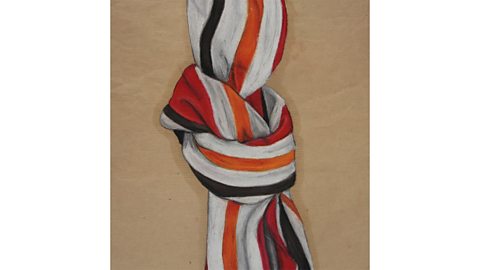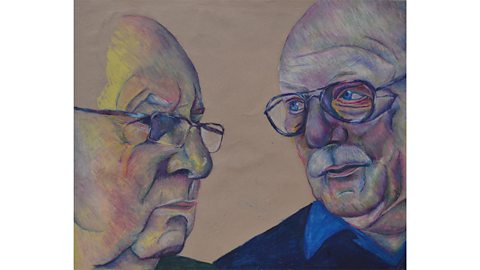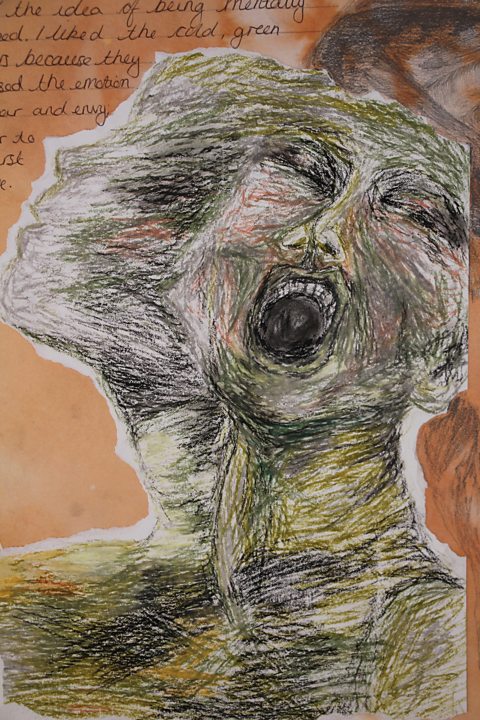Using pastels
Using oil pastels
Oil pastels are made from pigment A substance that is used for colouring. Pigments are usually dry powders which can be mixed with oil, water or another material to produce coloured media., waxes and fats. Their colours are rich and vibrant and when warmed up they have a tacky texture.
Blend oil pastels by moving them in a circular motion on the page and layering colours. Creating detail is more difficult than with some other tools such as pencil, so oil pastels are often better for larger works or for working with blocks of colour.
Click through the slideshow for examples of different oil pastel drawings:

Image caption, Student's artwork of fabric drawn in oil pastel
Image caption, Still life artwork drawn with oil pastels
Image caption, An abstract oil pastel drawing
1 of 3
Oil pastels can be scraped away in sections and combined with other materials such as inks or watercolours to give a wax resistA substance used to coat a surface and protect it during a particular process. effect. You can also paint over oil pastels with white spirit or vegetable oil so your drawing looks more like a painting.
Using chalk pastels
Chalk pastels are vibrantBright, strong and full of energy. and have a soft, crumbly texture. Colours can be blended by working on top of each other. Like charcoal, chalk pastels smudge easily so a fixativeA substance used to hold something in position or to prevent it mixing with other materials such as water is needed to keep them in place. Soft chalk pastels are good for filling large areas and building up colours.
Click through the slideshow for examples of different chalk pastel drawing:

Image caption, A student's portrait drawn with chalk pastels
Image caption, A portrait being drawn with chalk pastels
1 of 2
Hard pastels and pastel pencils are better for finer, clearer lines and for detail. It can be effective to use soft and hard pastels together to create images with a mix of blended colours, detailed lines and textures.
Using wax crayons

Wax crayons are harder and more brittle than oil pastels. They are usually less vibrant so they can be useful for more natural colours.
Like oil pastels they are quick to use and crayon drawings do not need a fixative to protect them. They can be layered and scratched, and used to create a wax resist effect.
It can be difficult to create detail and blend colours with crayons. However, they are ideal for showing texture and mark making skills.